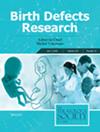Variants in Chromatin Remodeling Genes Are Involved in Patients With Chiari Malformation Type 1
Abstract
Objectives
Chiari malformation type 1 (CMI) is defined by the herniation of cerebellar tonsils of 5 mm or more, with possible neurological consequences, including compression of the neural tissue and/or anomalies in cerebral spinal fluid circulation. The etiology of CMI is not fully elucidated, with both genetic and environmental factors being involved. Several genes and pathways involved in bone development are pointed out like genes of the WNT, FGF, and BMP signaling pathways. More recently, the crucial role played by chromatin remodeling genes in the pathogenesis of CMI has increasingly emerged.
Methods
In this paper, we discuss a familial case of CMI and a single patient, harboring variants in chromatin remodeling genes, identified by whole exome sequencing.
Results
The first is a family with three affected members and one sibling with a cerebellar tonsil herniation of < 5 mm. The three CMI patients harbor a heterozygous missense variant in the SETD2 gene, whose truncating variants are responsible for Luscan–Lumish syndrome. A second variant in HP1BP3, a gene not previously associated with human pathology, with evidence of skeletal anomalies in mice models, was found in the three patients and also in the girl with a herniation of < 5 mm. The second case is a proband with a de novo variant in KMT2A, associated with Wiedemann–Steiner syndrome, in which anomalies of the craniocervical junction are described.
Discussion
We highlight the importance of chromatin remodeling genes in both isolated and syndromic CMI and suggest the potential role of HP1BP3 as a possible modifier gene in CMI pathogenesis, even if this association needs to be further clarified.


 求助内容:
求助内容: 应助结果提醒方式:
应助结果提醒方式:


